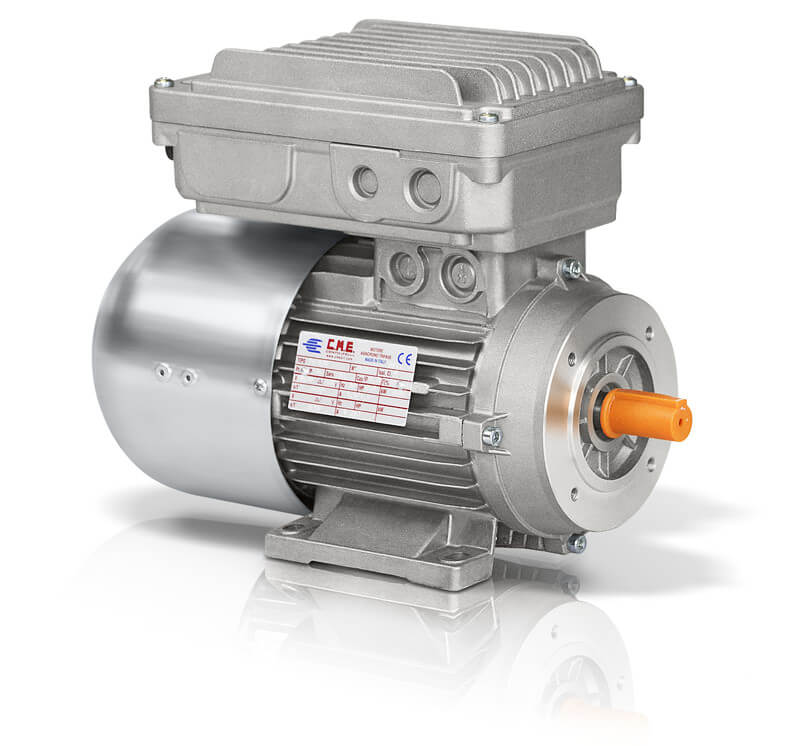Inverter Electric Motors

Description
- to control the speed, the torque, the position and acceleration;
- to optimize energy and material consumption;
- to combine different machines and control, in a coordinate way, their speed.
Already during manufacturing, all C.M.E. S.r.l. motors foresee suitable solutions that avoid the risks of future malfunctions.
If the user machinery requires significant variations in speed, and, above all, if the motor is to be used for long periods at low rates, forced ventilation must be adopted. This involves installing a fan cover that houses the fan used to ensure constant ventilation and cooling to the motor and the electronic unit, no matter what speed the inverter generates. In the versions sized from 63 to 100, the fan cover is perfectly suitable for installation on any electric motor, in place of the terminal box cover.
Main features:
Inverter motors have a limited height of axis, they are wound in sheet packs which have a small external diameter but whose length, varying according to the power requirements, can be remarkable.
- three-phase and single-phase with closed cage rotors
- with external ventilation and single or double polarity.
They are also available with DC safety brake.
Typical applications:
they can be used for different applications:
- wood working machinery
- machinery for metal
- marble and glass
- machine tool
- packaging machinery
- production lines
- pumps
- lifting machinery
- transports
Note:
The application and mounting of inverter motors must be performed only by skilled technicians as this kind of motor provides a constant torque to the shaft until a specific frequency is reached (initial stage called “constant-torque and variable-power”). In this phase also power increases linearly with respect to the speed gained. Beyond this given frequency, however, the value of the torque to the shaft decreases inversely to the frequency which has been set (second stage defined “constant-power and variable-torque”).



